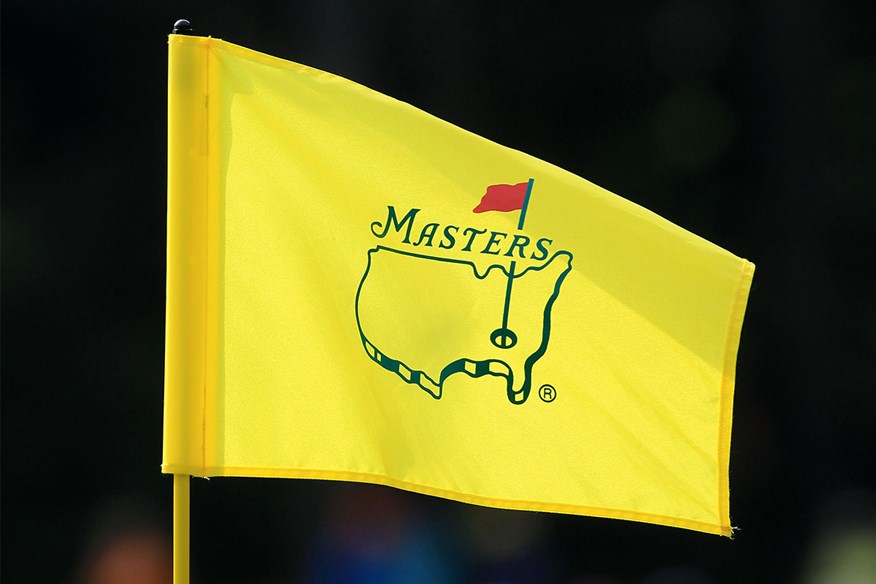The sand isn’t sand, there is no “rough” – and other crazy things you never knew about The Masters
Last updated:
How well do you think you know The Masters? Find out as we reveal some fun facts you may not know about the year’s first Major.
The Masters is the most anticipated week of the year for many golf fans. It marks the beginning of the golf season proper and gets major action back underway following a lengthy nine-month wait since The Open.
If you love The Masters like we do, you’ve probably watched it every year for as long as you can remember and may well think you know all there is to know about the tournament, the course, the history, and everything that makes the tournament so special.
You may well know that Tiger Woods, Jack Nicklaus, and Arnold Palmer have 15 Green Jackets between them, or that for every eagle or hole-in-one at Augusta National, the player is awarded with a piece of crystal.
But there may be a few things you’re not aware of. Such as the fact that the sand in the bunkers isn’t actually sand or that members are unable to play the course for six months after the Masters concludes.
I’m guessing that even knowledgeable Masters fans will find a few facts in this list that surprise you. So, without wasting any more time, here are 15 fun things you never knew about The Masters.

Only three pros are current members of Augusta National
A Green Jacket does not earn you membership at golf’s most exclusive club. If you win the Masters you’ll become an honorary member of the club and be invited back each year to play in the tournament, but this does not mean you get full membership rights.
The Golden Bear himself, Jack Nicklaus, former amateur standout John Harris, and ten-time LPGA major winner Annika Sorenstam are the only tour players who are members at Augusta National Golf Club. Arnold Palmer made it four, before he sadly passed away in 2016.

The course is closed – a lot!
For many of us, golf is a summer sport and hot, sunny days are to be enjoyed on the course. But for the members at Augusta, it is very much a pastime for the cooler months. To look after the greens and ensure the course is pristine come the Masters, members can only play the course from October to April. The summer months are spent doing any condition or renovation work on the course.
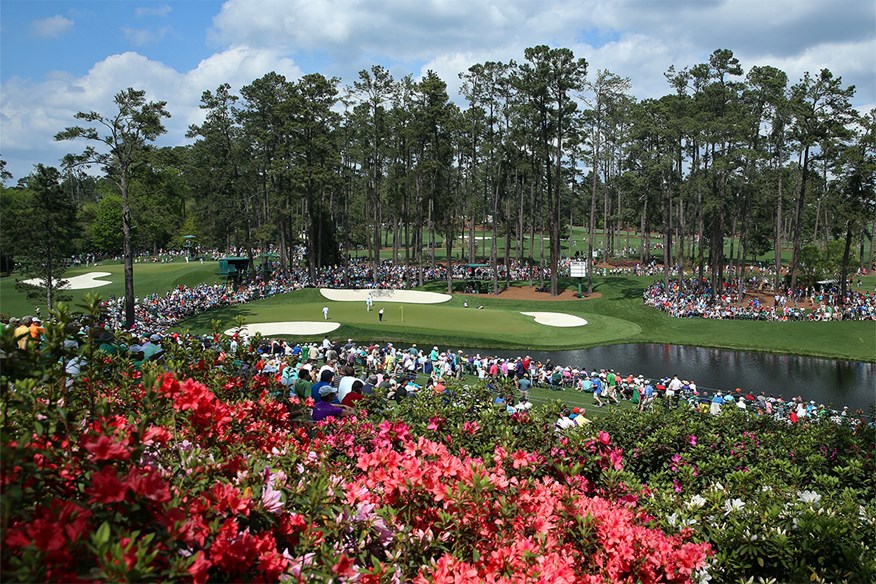
Each hole is named after a flower or tree grown on the land
The hole names at Augusta National pay tribute to its former life as a plant nursery.
In 1857, Belgium’s Baron Louis Mathieu Berckmans and his son, Prosper Julius Alphonso, purchased a 365-acre indigo plantation near Augusta, Ga. They called upon decades of horticultural experience honed in Europe to transform the property into a floral and arboreal showcase.
The enterprise, named Fruitland Nurseries, became one of the world’s most innovative nurseries and operated under three generations of the Berckmans family until 1919. Louis and Prosper passed away in 1883 and 1910, respectively, but they had sown the seeds for the pristine location that Bobby Jones had been looking for to build his “ideal” golf course, the home of Augusta National Golf Club and the Masters Tournament. It was only fitting that the hole names carried on the legacy of Augusta’s origins.
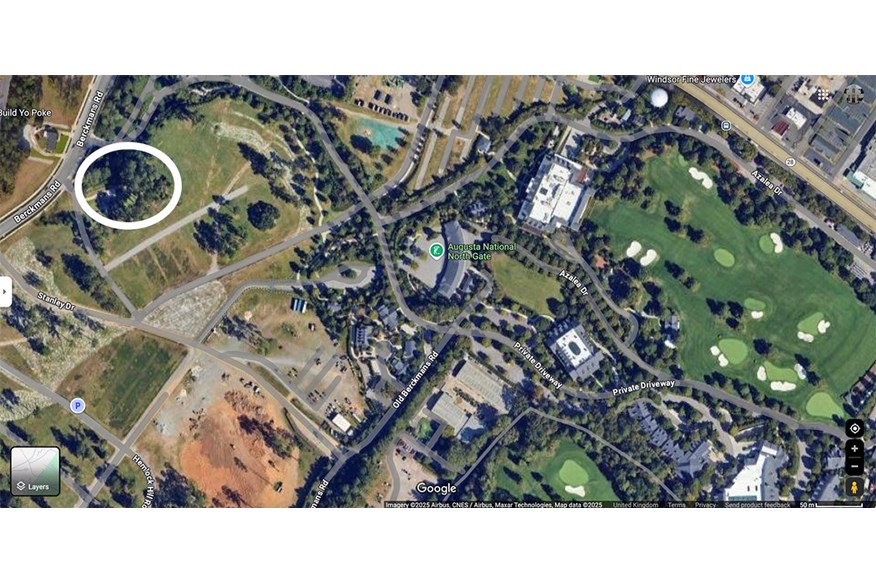
There is a house in the Masters car park because the owners refuse to sell
Parking at the Masters is free, thanks to Augusta National’s decision to buy up land west of the course to create extra space – and they’ve continued snapping up plots as they become available.
To convince locals to sell, the club typically offers well above market value for their properties. Most homeowners jump at the chance to cash in and escape the annual Masters mayhem, but Elizabeth Thacker and her late husband, Herman, who passed away in 2019 – were not so easily swayed. Their three-bedroom home still sits right in the middle of the car park.
One possible reason for holding out? Their grandson is PGA Tour player Scott Brown. He’s yet to qualify for the Masters, but if he ever does, he’ll have one of the most convenient bases in tournament history.
The Thackers did part with a property they owned across the street, reportedly selling it to the club for $1.2 million.
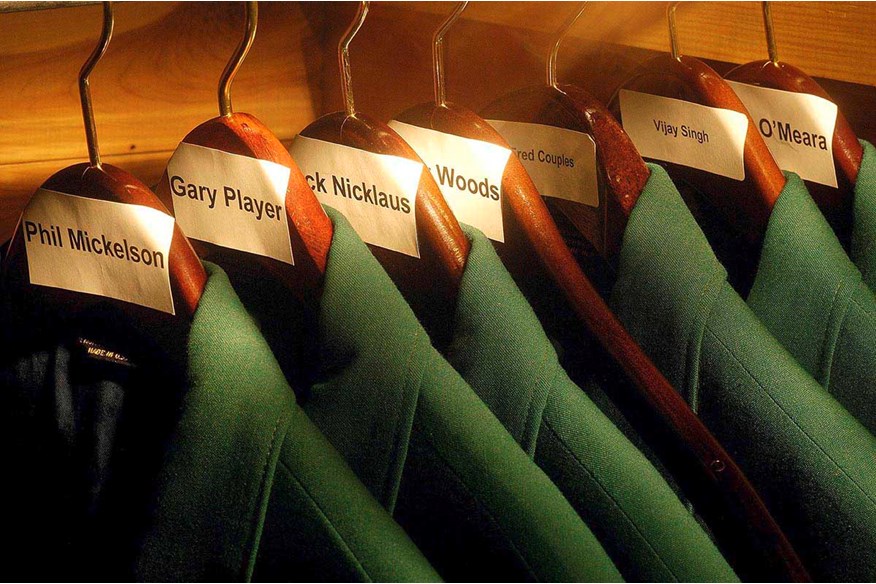
You’re not allowed to call anything other than the Green Jacket the “green jacket”
Augusta are very protective of their Green Jackets. They trademarked the name in 2010 and even filed a lawsuit in 2017, preventing the sale of a champion’s Green Jacket by Green Jacket Auctions. In February 2019, Augusta National ordered an annual tournament at Mullion GC in Devon, England, to stop awarding its winner a Green Jacket as it breached their copyright.
Only first-time winners are allowed to take their Green Jacket off-site. After 12 months, each jacket is kept permanently in the Champions Locker room and worn only during Masters week, strictly within the confines of Augusta National.

Players were assigned caddies
Until 1983, all of the player’s caddies were provided by Augusta National. This meant that past champions such as Ben Hogan Jack Nicklaus, and Arnold Palmer all won with caddies provided by Augusta rather than their usual bagmen.
Some even won with the same caddie multiple times. Augusta looper Willie Peterson caddied Nicklaus’ first five victories, while Nathaniel “Iron Man” Avery was on the bag for all four of Palmer’s triumphs.
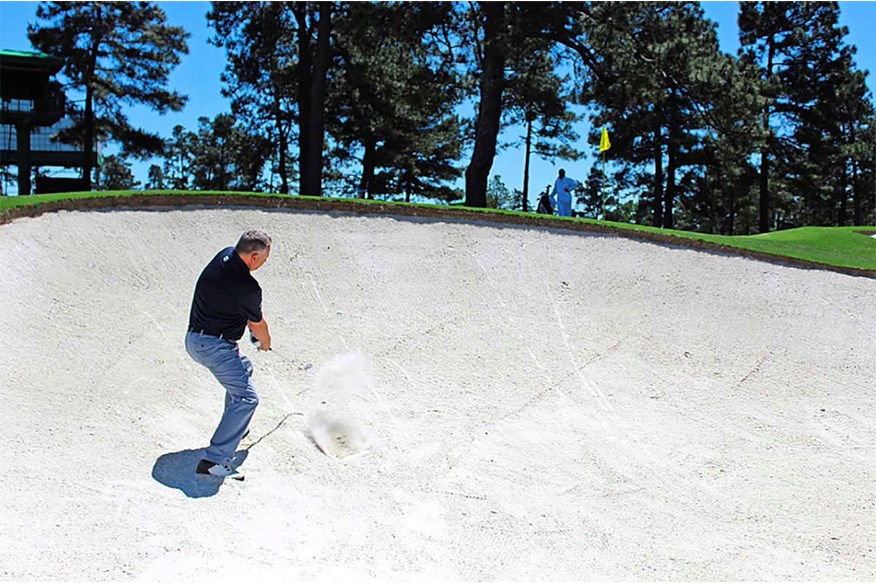
Why are the bunkers so white?
Augusta has a total of 44 bunkers – 32 greenside and 12 in the fairway. The 14th is the only bunkerless hole on the course.
If you’ve ever wondered how they get the sand so white, it’s because it’s not actually sand. Known as “Spruce Pine”, the sand is actually granulated quartz, a material so pure it is used to produce semiconductors for computers and mobile phones.
The sand gets its name from the Spruce Pine Mineral District in North Carolina, where it is mined.
Cliff Roberts, co-founder of the Masters and Augusta National Golf Club, was the dictatorial visionary who set tournament and club standards. He insisted the quartz be installed in time for the 1975 Masters and they’ve used it ever since.
Quartz of this type sells for over $10,000 per tonne.
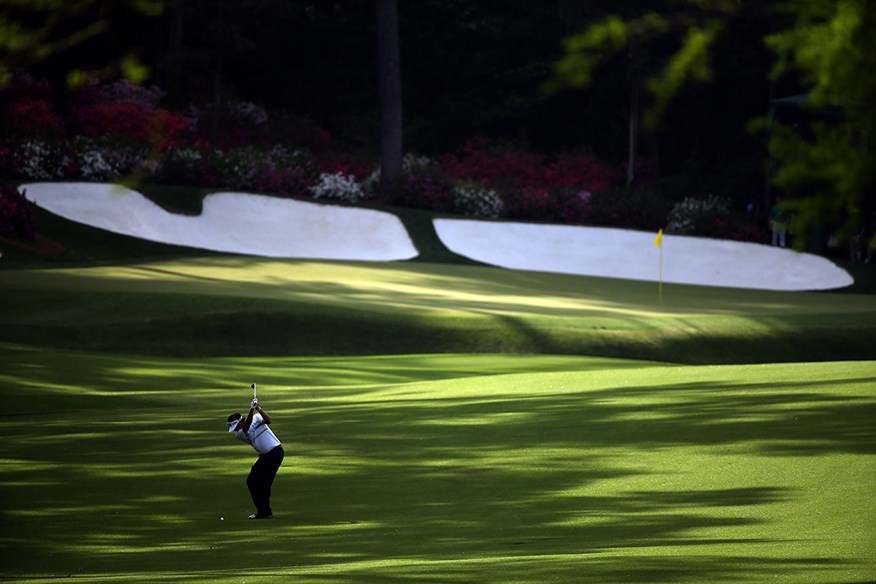
A patron was once arrested for stealing sand
Most patrons are keen to take home a Masters memento or two, but whatever you do, don’t try to grab a freebie from the course.
After Bubba Watson won the 2012 Masters in a playoff, patron Clayton Baker decided to nip inside the ropes and grab a cup of Augusta’a pristine sand (that’s actually quartz) from a nearby bunker.
Baker was immediately arrested and eventually settled a legal case that cost him about $20,000 in fees and other costs.
And no, he did not get to keep the sand.
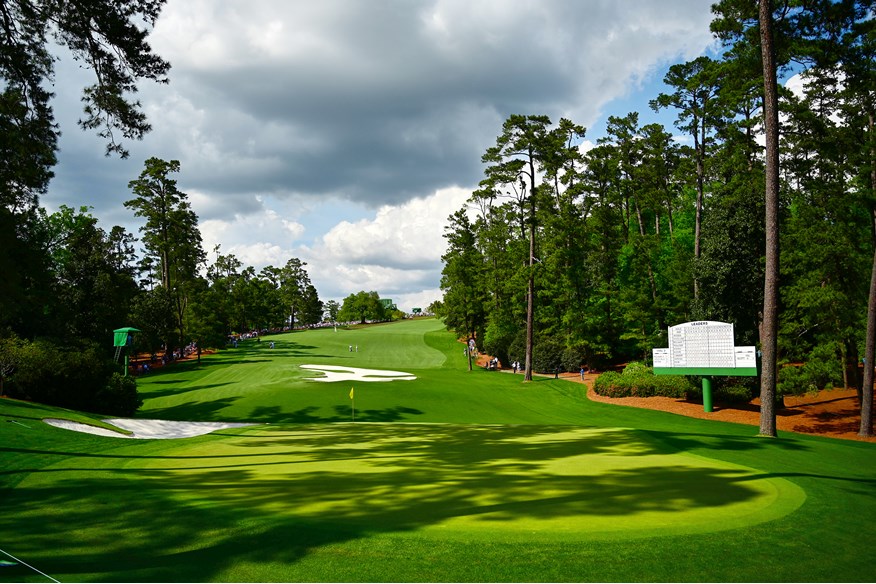
Why does the grass look so good?
The attention to detail at Augusta National is spectacular and it doesn’t end with the quartz-filled bunkers. Most flowers and trees come beautifully into bloom just in time for the Masters, but for any bare grass on the course or even anything slightly off-color, rumor has it that it will be painted green ahead of the tournament to ensure the course looks immaculate.
Whilst the fairways look gorgeous, there’s devil in the detail. The fairway grass is mowed back toward the tee box to ensure you get minimal rollout on tee shots. If that wasn’t enough, the trees that line each hole are cut so they lean into the fairway, making the holes seem much tighter.
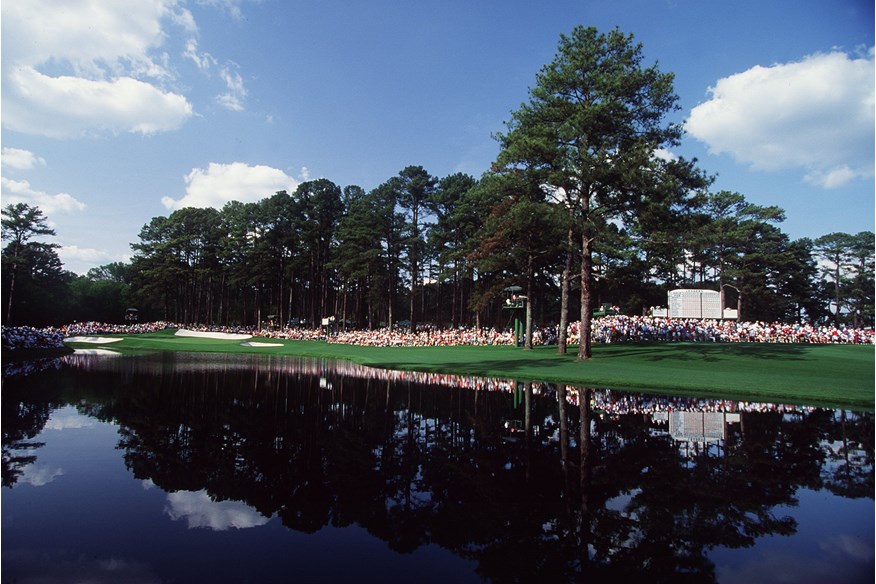
Dye in the water
Ever wondered how they create that famous sheen on the water around Augusta National?
Back in 1996, an American Journalist was fortunate enough to play the course and bold enough to take a sample from the pond in front of the 15th green. He later had it tested and it was confirmed the water contained food dye, similar to the type used to color icing on a cake.
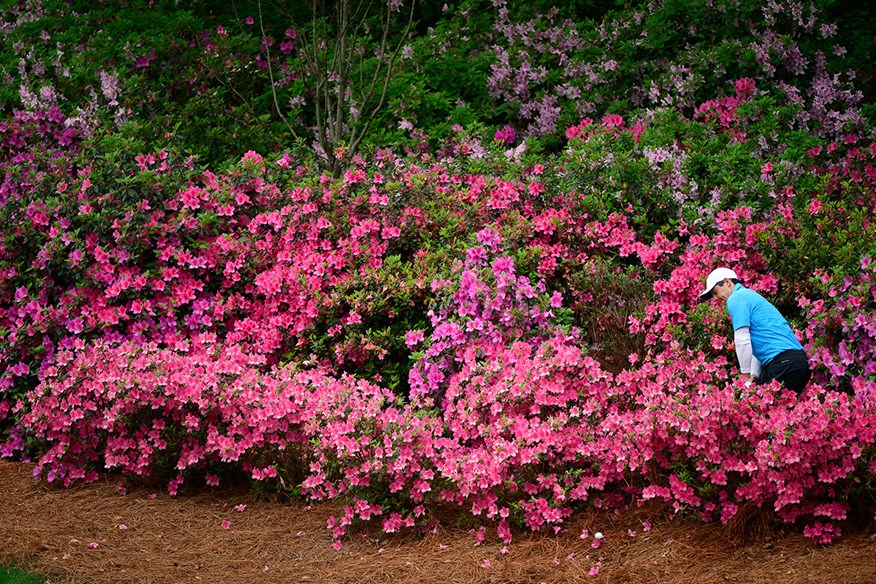
How are the azaleas always in bloom at the Masters?
There is a longstanding rumor, known as ‘the ice theory, that the groundstaff ice the azaleas if spring comes too early, to ensure Augusta’s most iconic flowers are in bloom for Masters week – but the evidence suggests this is a myth.
The timing of The Masters usually means the azaleas are in bloom anyway, but the November playing of the 2020 Masters – caused by COVID-19 – largely debunked the theory. There were some azaleas in bloom – of the autumn variety – but not nearly as many as the plentiful blooms in spring.
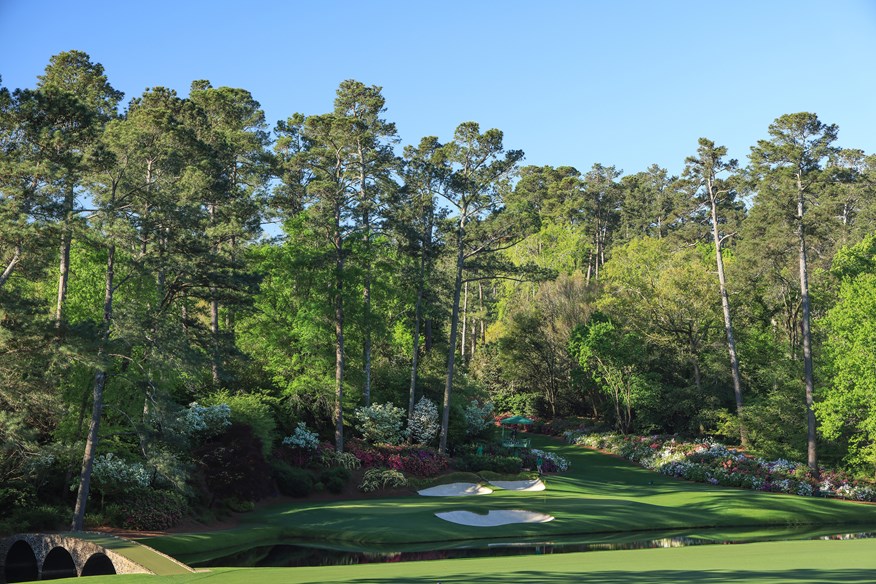
Bird is the word
Another longstanding conspiracy theory is that speakers hidden in trees throughout the course play birdsong throughout the day. This is a) a bit bonkers and b) almost certainly untrue, and categorically denied by Augusta National.
Anyway, if you were a bird, why wouldn’t you spend Masters week at Augusta National? The scenery is beautiful, there are loads of trees to perch on, you get a bird’s eye view (literally) of all the action, and there’ll be no shortage of pimento cheese sandwich crumbs to feast on. Sounds like heaven.
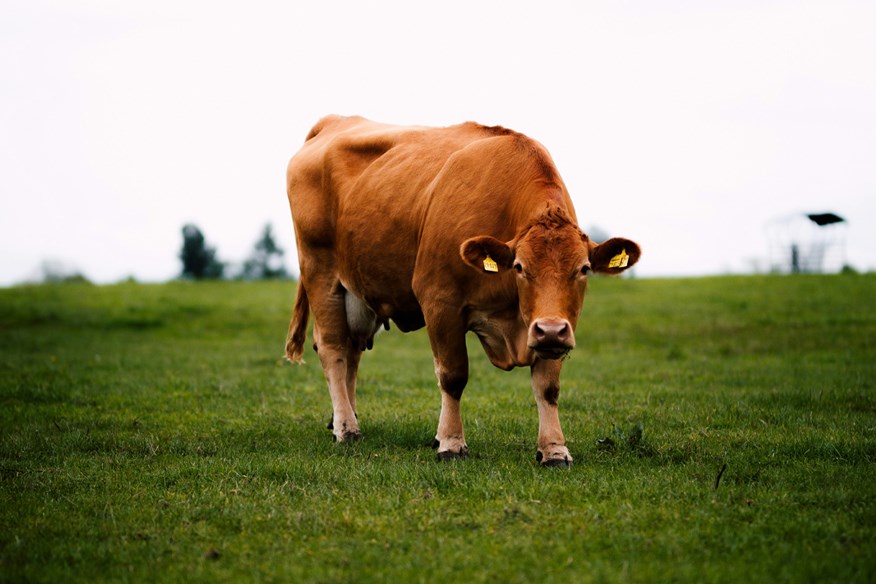
There used to be cows on the course
Augusta closed after the 1942 Masters and remained closed for several years due to World War II. The club was in poor financial shape and bought 200 cattle and 1,000 turkeys to graze as a low-cost way of keeping the grounds in check.
If that strategy sounds a bit iffy, it was.
With the Club closed, workers stopped the annual planting of winter grass, and as the bermudagrass on the grounds became dormant, it provided little in the way of food and nourishment for the cattle. That led to a problem: the cows started eating the famous azaleas and the bark off young trees at Augusta National.
A few dozen German prisoners of war were brought in to restore the course, while members of a bridge-building engineering crew in Erwin Rommel’s Nazi Afrika Corps helped erect a bridge over the 13th hole.
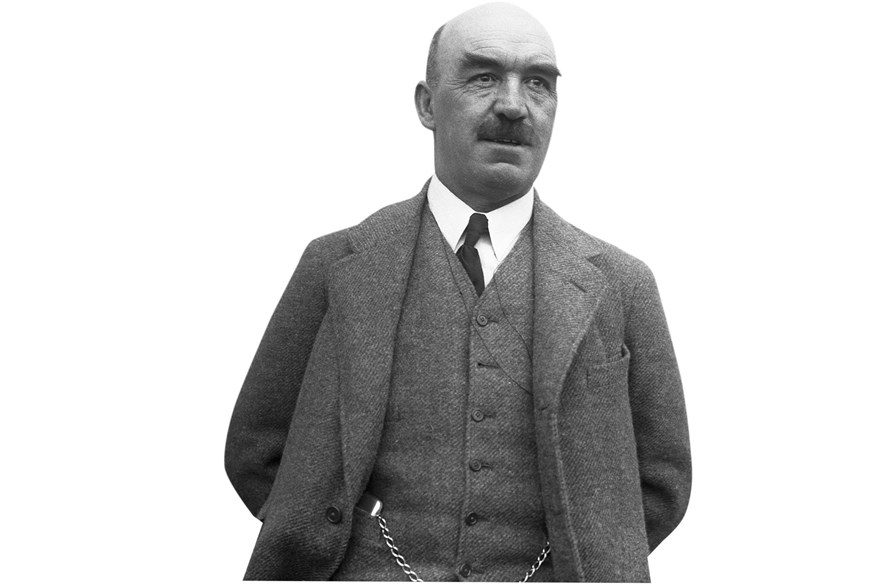
The man who designed Augusta never got to see The Masters
Alister MacKenzie, widely regarded as one of the greatest golf architects of all time, designed Augusta alongside Bobby Jones. Somewhat tragically, he never got to see it host the Masters. In fact, he never ever saw the course with grass on it.
The greens were shaped in March 1932 but MacKenzie left for England shortly after and before the seeds had come through. He passed away two months before the inaugural Masters in 1934.

No phones allowed!
If you can’t stay off your phone for more than a few minutes at a time, the Masters may not be for you! There is a complete phone ban at Augusta National Golf Club – and it’s rigidly enforced. There are undercover Augusta officials hidden amongst the crowd and if you’re spotted with a phone on site, even in your pocket, you will be escorted off the premises.
Cameras are allowed but only on the practice days – Monday to Wednesday.
Smartwatches and fitness bands are allowed, but not if you’re using them for calls or messages.
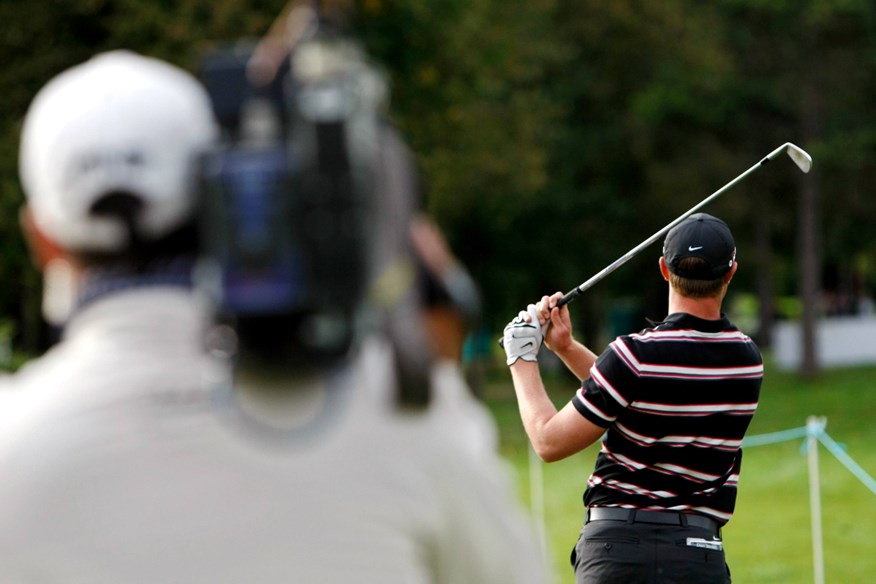
Watch your mouth!
The Masters is the only big golf tournament to receive no money for television rights. The free broadcasting rights do come with some strict caveats, though.
- You can only show a maximum of four minutes of advertising per hour of coverage (which is around 25% of what’s typically seen at golf’s other three majors).
- On-air broadcasters cannot say “fans” or “crowd” and must instead refer to them as patrons.
- Broadcasters cannot say “rough” and must call it the “first cut” and “second cut”.
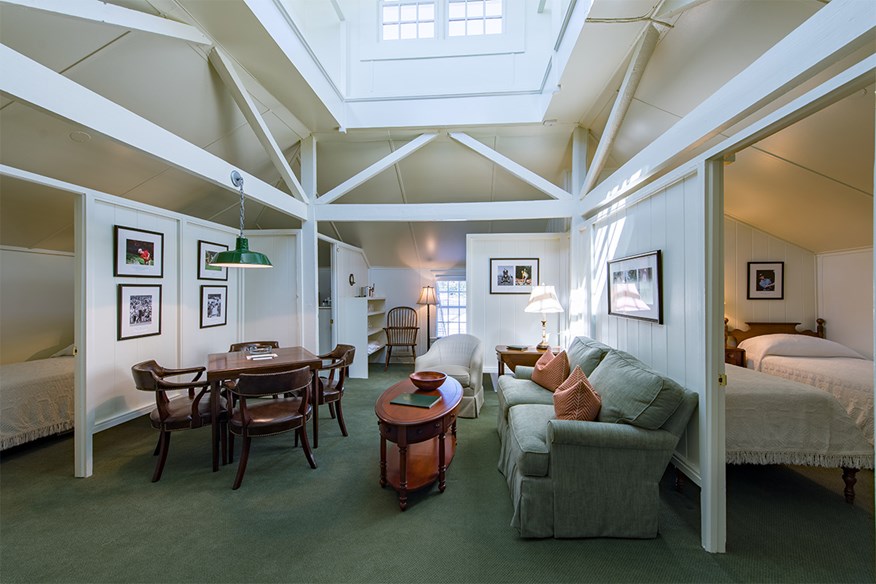
Shared bathroom
You’ve probably heard of an amateur staying in the Crow’s Nest at Augusta during tournament week, but you may not realize that up to six rookies can share the unique living space.
Located up some steep stairs on the third floor of the Augusta National Clubhouse, the Crow’s Nest is nothing more than a simple 30′ x 40′ room in the roof of this iconic building. The classic, vintage-looking sleeping quarters are separated by partitions creating four bedrooms. There is also a full bathroom and seating area in the middle with a games table, sofa, telephone, and television.
Although no amateur has ever won the Masters, several have gone on to later win the tournament as professionals. This list includes the likes of Jack Nicklaus, Tom Watson, Phil Mickelson, and Tiger Woods.
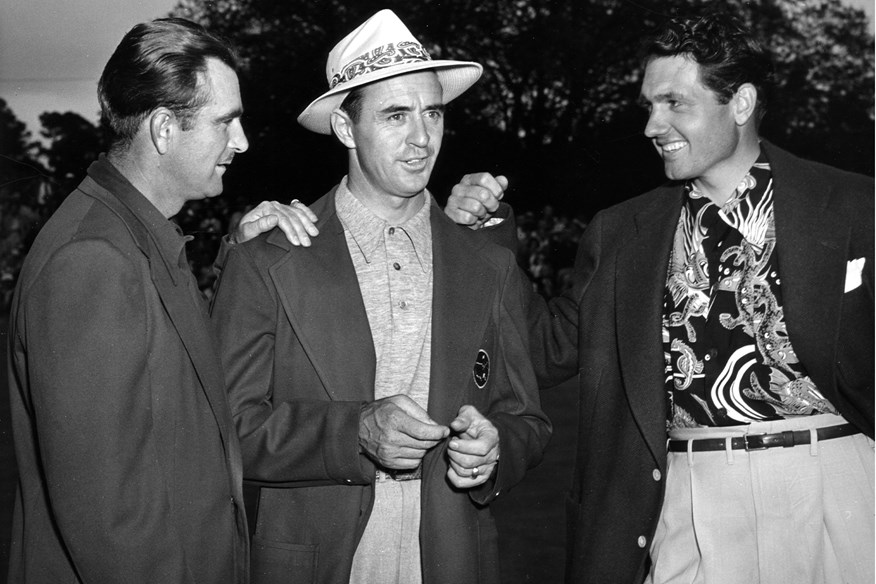
When was the first Green Jacket?
When Augusta opened in January 1933, Bobby Jones suggested to business partner Clifford Roberts that former captains of the club should wear jackets. The only issue was finding the right color. But while walking the Augusta property, Roberts’ eye was drawn to a particular leaf below the azalea. Known as verdant green, the choice was made and a legend was born.
Four years later, Roberts decreed that every member attending the Masters should wear his Green Jacket so that visitors could pick them out from the crowd and ask them for directions.
The first professional to receive one was Sam Snead in 1949. Bright green and made from an inexpensive wool polyester mix, the original jacket may have left Snead underwhelmed, but today it tops the most wanted list of most tour pros.
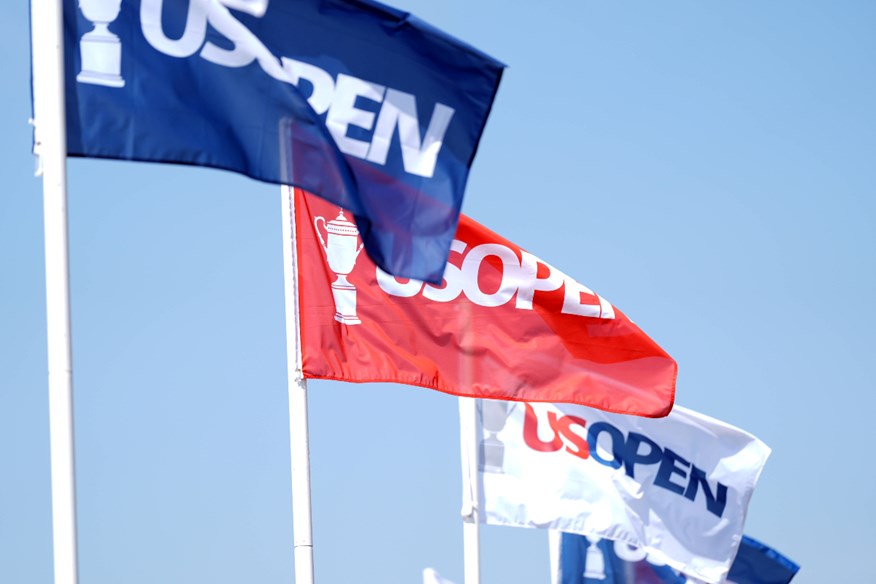
Augusta was almost a US Open venue instead of the Masters’ home
Facing financial issues as they opened during the Great Depression, Augusta National bid to host the 1934 US Open as a way to bring in revenue.
The proposal was rejected because playing in the Georgia summer heat would have been insufferable and the logistics of getting everyone to Augusta were prohibitive.
Instead, they opted for an invitation-only tournament called the ‘Augusta National Invitation Tournament’.
Augusta co-founder Clifford Roberts pushed for it to be called the ‘Masters’ and although Bobby Jones wasn’t keen on the moniker, it stuck, and has more than stood the test of time.

The best seats in the house
Just $30 secures you an official chair from the Masters shop (which is an experience in itself) and you can place it in any of the spectator areas. Each chair has a name card located in the plastic sleeve on the back and the unwritten rule is that Once you’ve found your spot and placed your chair, you can leave it there and return to it throughout the day, thanks to an unwritten Masters rule that anyone can sit in any chair on the course until the owner of said chair returns and asks to sit back down.
Chairs cannot be left overnight so patrons queue bright and early to ensure a good spot when the gates open at 8am. Once the gates are open the well-prepared patrons will make a beeline for their required location on the course.
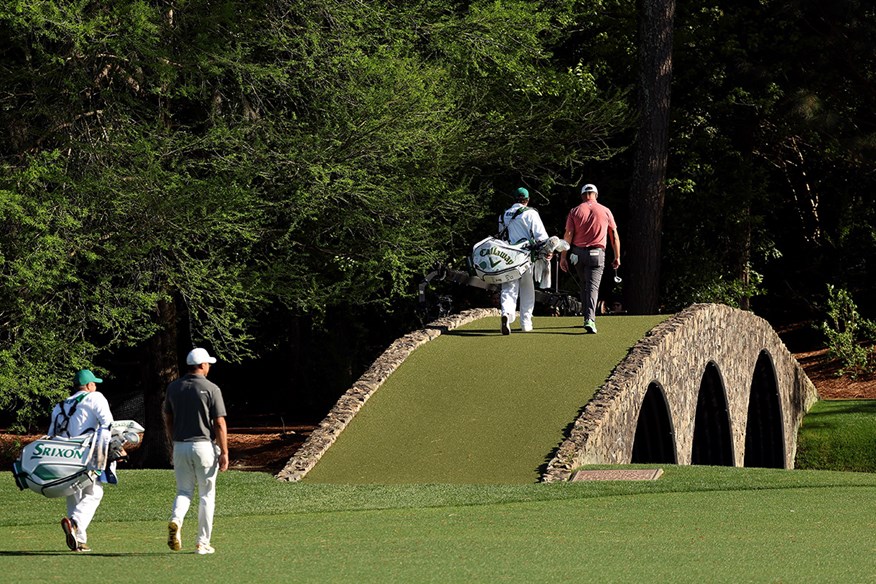
Bridges named after pros
At Augusta, there are three bridges dedicated to legendary golfers in honor of their achievements at the iconic venue.
Arguably the most famous of the three is Hogan’s Bridge, to the left of the 12th Green, honoring Ben Hogan’s then-lowest 72-hole score in Masters history – which was the 274 total he recorded in 1953. The bridge was set in stone before the 22nd Masters in 1958.
On the following hole, in front of the 13th tee, crossing Rae’s creek is the Nelson Bridge. The bridge commemorates Byron Nelson’s performance on this particular section of Amen Corner, with a birdie on 12 and an eagle on 13 on his way to victory in 1937.
The final of the three bridges sits to the left of the 15th green. Sarazen’s Bridge was unveiled the day before The Masters in 1955. The bridge commemorates Gene Sarazen’s albatross (aka double eagle) during his final round in 1935. His final-round heroics saw him tie the lead with Craig Wood before going on to win the following day in the tournament’s only 36-hole playoff.
READ NEXT: Why no one wants to win The Masters Par 3 Contest
-
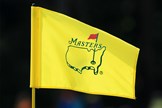 15 things you didnt know about the Masters
15 things you didnt know about the Masters
-
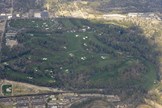 Augusta is shut throughout the summer months
Augusta is shut throughout the summer months
-
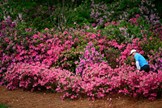 The Azalea's in full bloom at Augusta
The Azalea's in full bloom at Augusta
-
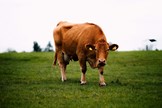 There used to be cows on the course at Augusta National.
There used to be cows on the course at Augusta National.
-
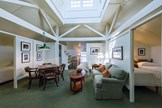 The Crow's Nest on the third floor of the clubhouse at Augusta National
The Crow's Nest on the third floor of the clubhouse at Augusta National
-
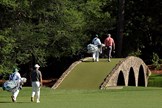 Hogan's Bridge beside the 12th Green at Augusta
Hogan's Bridge beside the 12th Green at Augusta
-
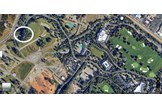 There is a random house in the Augusta National car park
There is a random house in the Augusta National car park
-
 Jack Nicklaus and Arnold Palmer at the Masters
Jack Nicklaus and Arnold Palmer at the Masters
-
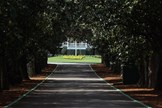
-
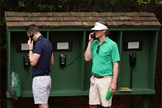 No Mobile Devices are allowed on site at Augusta National
No Mobile Devices are allowed on site at Augusta National
-
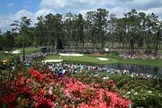 The beauty of Augusta National has to be seen to be believed.
The beauty of Augusta National has to be seen to be believed.
-
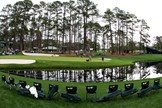 Augusta seating on the side of hole 16
Augusta seating on the side of hole 16
